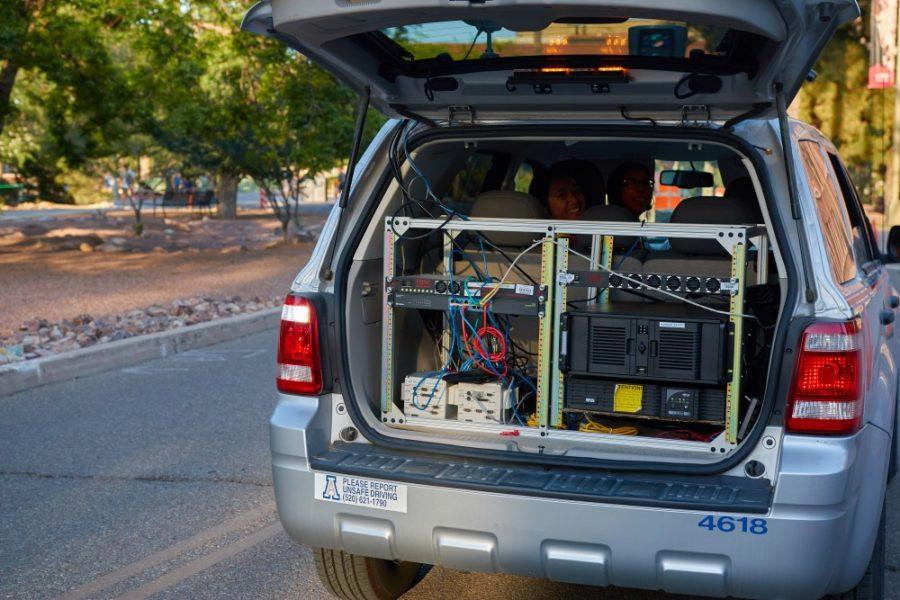A car equipped with whirring and protruding sensors arrived outside Old Main on Sunday afternoon, the street lined with safety cones and volunteers in neon vests directing students out of the road and out of the way of the self-driving car.
The autonomous car is part of the Cognitive Autonomous Test Vehicle Competition, a hackathon-esque, three-day challenge where teams of two to four students collect data from the car’s sensors, code instructions to the car, and eventually run a system to make the car drive on its own.
Out of all the teams participating, about 20 were from the UA and four were from out of state. The out-of-state teams came from as near as Missouri and Atlanta to as far as Chile and Switzerland.

Dr. Jonathan Sprinkle has been teaching the class connected to this final project for almost ten years and working on self-driving car technology since 2008. The problem was, he said, that it was limited to people trained in his lab who could be close enough to the hardware to do interesting things.
“Over the last two to three years, we took a change where we said, ‘What would people be able to do if they just had a software connection?'” he said. “If all they could do was use the software, could they do more interesting things? Could we have people be involved with the car even though they can’t get really close?”
For 18 months, his team has been working to make this possible.
This class focuses developing software with a team and has given opportunities for students to learn coding for technology. Graduate student Matt Bunting, who took over teaching the class for Sprinkle this year, predicts that technology will be mainstream by the end of 2020.
RELATED: Competition tasks students to program better self-driving cars
Kurt Marley, an online graduate student, is a professor of computer science at Glendale Community College. At 60 years old, he has seen the rapid progress of technology throughout his lifetime.
“In 1984, the National Oceanic Atmospheric Administration spent $8 million and bought a Cray-1 supercomputer,” Marley said. “ten years later—Christmas, 1994—you could buy a Nintendo 64 at Walmart for $140, and it had one and a half times the processing power more than the Cray-1.”
He picked up his phone, commenting on the amazing amount of processing power it had, more than NASA ever used.

One of the competition’s mentors, electrical and computer engineering junior, Swati Munjal, said he hopes competitors walk away with the ability to implement their own ideas and algorithms for autonomous cars.
“If not autonomous cars, then when they’re out there in their fields they are more motivated to go out there and develop their own ideas that will help society and solve problems,” he said.
The competition will end on Tuesday with the actual running of the car without a driver. Students are advised to stay out of the road and not get run over.
Follow Rocky Baier on Twitter.















